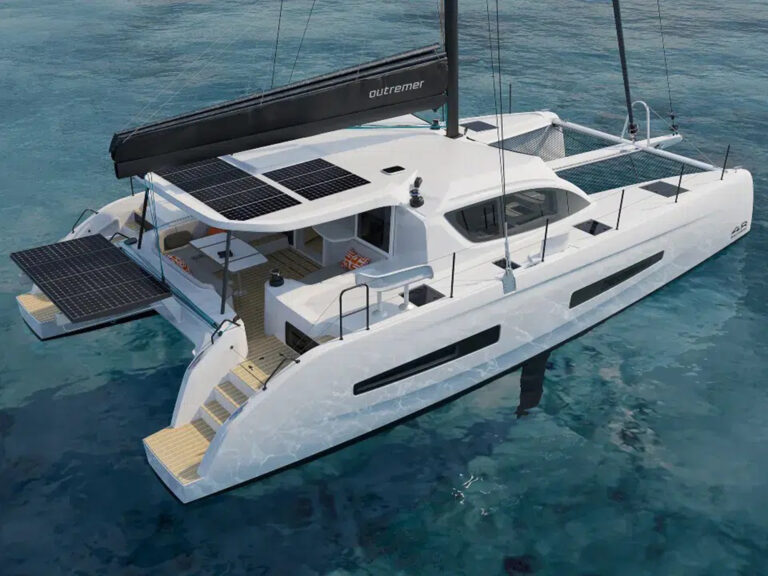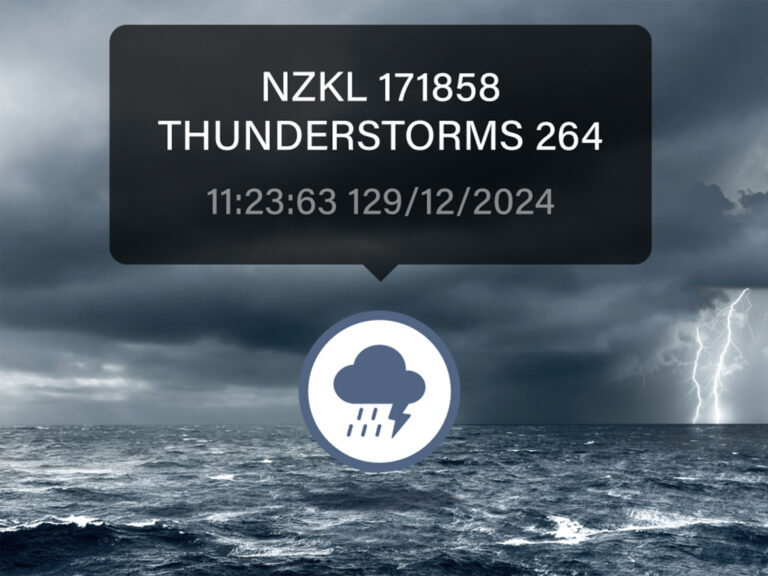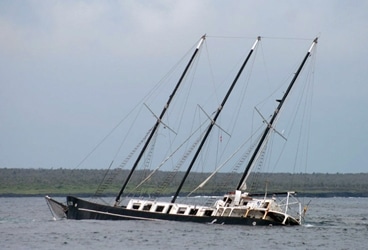
Less than a week before our arrival, this three-masted charter boat came to grief near Academy Bay.
Serving as both an object lesson and a cautionary tale, the image was enough to send a shiver down any sailor’s spine. We were on our final approach to Academy Bay, at Isla Santa Cruz in the heart of the Galapagos archipelago, when we spied the three cockeyed masts not far from the harbor entrance. This was clearly a fresh shipwreck, and we later learned that the big charter vessel had come to grief only a week before our arrival. A navigation light had blinked out, and the skipper reportedly mistook Santa Cruz for a neighboring island; remarkably, it was the second ship he’d lost. The crew and the passengers all escaped safely, but the message was crystal clear. Even in well-traveled, supposedly familiar waters, an extremely bad day is just a submerged rock away.
On our ongoing expedition Around the Americas (www.aroundtheamericas.org) aboard the 64-foot cutter Ocean Watch, we’d looked forward to our stop in the Galapagos with great expectation. In the 175 years since Charles Darwin’s legendary journey aboard Beagle, the famous islands straddling the equator have become a Pacific Ocean outpost for ever-increasing numbers of adventurers and voyagers. Some 15 years ago, I paid my first visit there with a group of Cruising World readers on one of the magazine’s Adventure Charters to exotic locales. At the time, restrictions imposed by the Ecuadoran government made it difficult for cruising sailors to spend much time there, and the anchorage at Academy Bay was sparse.
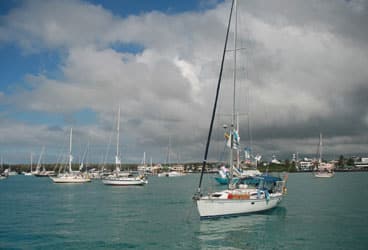
Herb McCormick| |An international fleet of cruising boats rests at anchor in the popular harbor of Academy Bay on Isla Santa Cruz.|
As we pulled into the bay this time, it was obvious that things had changed dramatically.Nearly three dozen yachts together on a Pacific rally sponsored by a British sailing magazine flew identical banners, and these were joined by at least another 20 cruising boats of all sizes and description. On top of that, there were 10 or 12 big dive boats and small liveaboard cruising ships sprinkled through the anchorage. And that huge superyacht anchored out in the roadstead? Rumor had it one Tom Cruise was vacationing aboard.
Once ashore, the once sleepy town of Puerto Ayora was bustling with activity; the main drag and the back streets were lined with hotels and restaurants, and ecotourists from around the planet were busy booking tours and dive trips. At the Charles Darwin Center, located on the outskirts of town, a resident oceanographer told us that the Galapagos have experienced a 14-percent increase in tourism every year for the past decade.
It was a different place, all right.
The highlight of our trip were the scuba dives we made on some of the neighboring reefs and islands, where we marveled at the fish, the sea lions, the big turtles, the rays, and especially the sharks: black- and white-tipped reef sharks, Galapagos sharks, and the remarkable hammerheads. If you want to see big animals in the water, come dive the Galapagos; you won’t be disappointed.
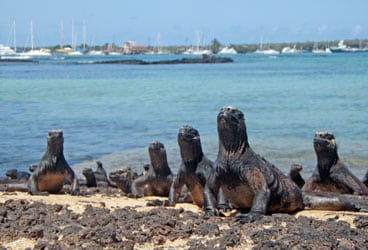
Herb McCormick| |The welcoming committee in the Galapagos Islands is unlike any other in the vast cruising world.|
Still, when we raised anchor and got under way for the next leg of the voyage, to Costa Rica, we were somewhat unsettled by what we’d seen. What makes the Galapagos so special is the delicate balance that exists between the vast, unique wildlife both above and below the waterline and the folks who come from far and wide to take in nature’s remarkable show. But as the shattered hull outside Santa Cruz reminded us, it doesn’t take much time or neglect for everything to teeter and fall.







